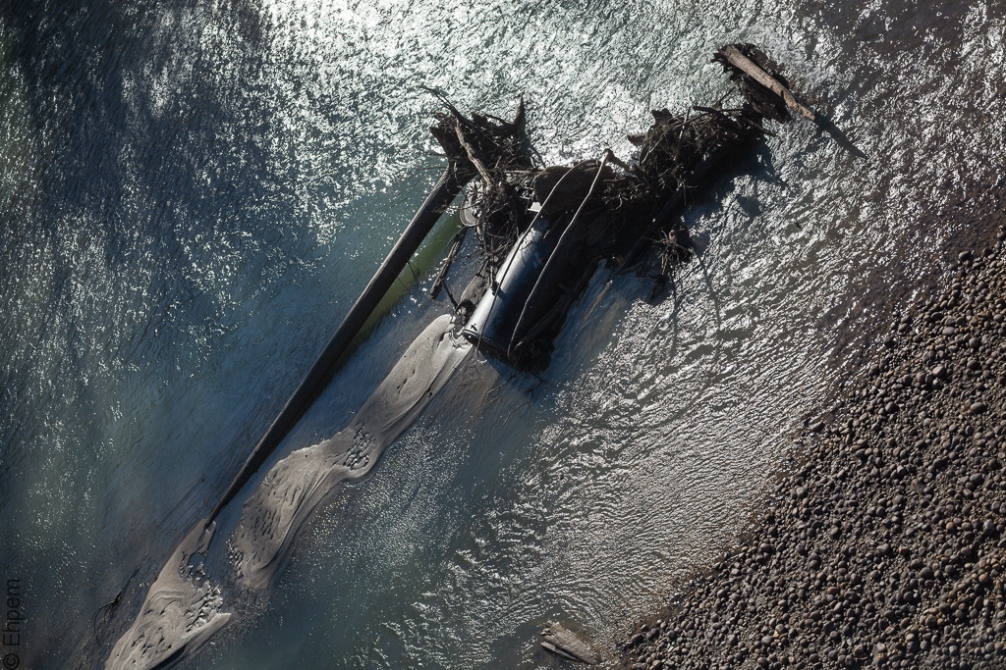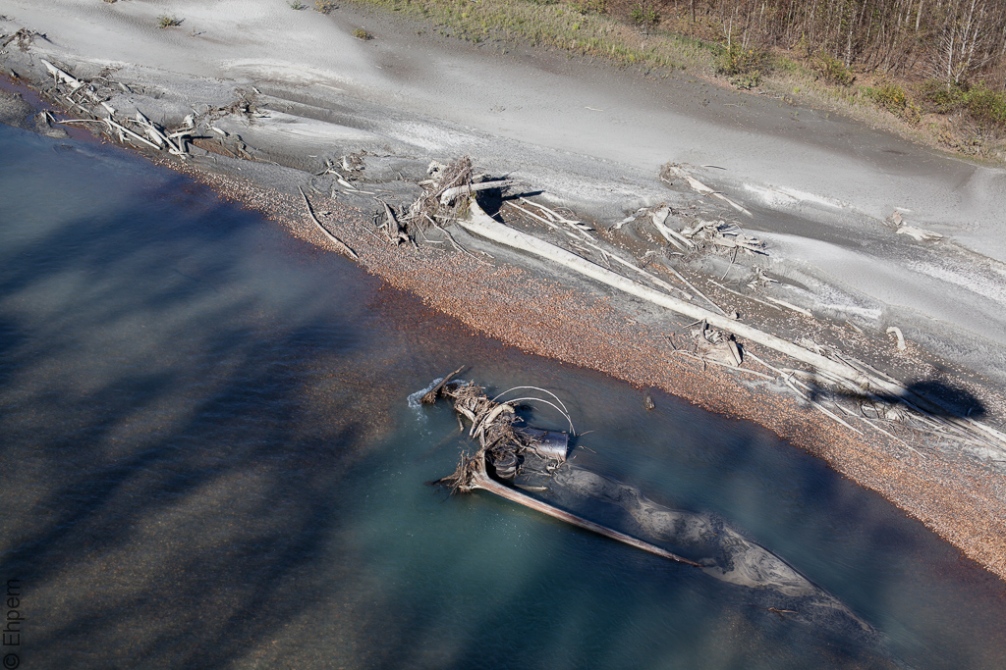Drowned Donkey

Steam donkey drowned in the Toba River, probably an Empire model. Some of these photos are in the diagonal series.

.
For a larger view click on any image in the gallery below, use the arrow keys to navigate and ESC to return to this page.
.
Canon EOS 5D MkII, Canon 50mm/f1.4 lens, ISO200, f5.0, 1/400th to 1/2,000th (see gallery for individual exif data).
.
.




















From what I can see this is most likely an Empire yarder like the one on display at Powel River. I have added it to my growing list of abandoned steam donkeys in British Columbia. If anyone is interested I would be glad to share. (contact: jtaub–at–juno-dot-com)
LikeLike
Hi John – thanks for dropping by and commenting. And thanks for sending me your list of BC steam donkeys, it is interesting to see how many there are. I have seen several over the years, but the only one other that I can remember the location of I sent to you by email. I am sure others of my readers know of some not on your list as quite a few are people that spend time in the BC wilderness looking for archaeological sites, and the like. Sounds like they should contact you with their information as it is useful to have a single list maintained somewhere. As per our emails, I have added your contact info into your original comment. Thanks again, nice to have this input!
LikeLike
One way of taking ones mind off the fact you are in a helicopter – great series of images.
David.
LikeLike
Thanks David. That is true. Getting behind the lens changes the view and experience completely!
LikeLike
Interesting photos – art in the most unlikely of subjects! I’ve seen things like this around the coast and often wondered what they might be. Thanks.
LikeLike
Hi Laurie – glad you like it. I suppose it is pollution too, but it sure looks nice in this setting!
LikeLike
Yes, funny, isn’t it, how pollution can often look so arty and interesting? 🙂
LikeLike
Your eye is impeccable Ehpem. Great compositions on all these shots, I love the leading lines and the subject you’ve captured and shared!
LikeLike
Thank you Toad. It seems kind of sad to see this artifact lying in the river, but it is a beautiful setting. It does not seem to be rusting or decomposing the way it would be in the bush – I think the silty water must keep the metal polished and free of rust.
LikeLike
Like several other commenters I’d never heard of a steam donkey before. These are very interesting pictures, and completely unlike anything I’ve ever seen before. Thanks for posting them!
LikeLike
Hi Melinda – thanks so much. Helicopter rides (with the opening window seat) are a thrill that I wish I had more of with a good camera. This is the first time I have had a good digital with me in a helicopter. Maybe I will get more chances.
LikeLike
I hope you do get more chances – especially if you get more great pictures like these!
LikeLike
Thanks! I have others from this trip, but in terms of colour and overall appearance, these are probably the best. Those shadows – they make it for me.
LikeLike
More on Grainger here: http://www.abcbookworld.com/view_author.php?id=3913
LikeLike
Thanks again! He sounds like a fascinating man, moccasins and all.
LikeLike
I love the colours in these. I too have never heard of a Steam Donkey.
LikeLike
I think they must be a feature of logging old growth forests with huge trees, no roads and very rough terrain.
I would not be surprised if this one was used on a barge to do what they called A-frame logging – with a tall A shaped structure on a barge or other mobile platform through/over which a cable would run from the donkey up the hillside and be used to winch cut logs down to the river and from there out to log booms on the coast.
It could also have been used in association with rough logging roads or possibly even a logging railway (though I don’t think there were any in this valley).
http://www.railroad-line.com/forum/topic.asp?TOPIC_ID=21521
We need to hear from Richard Mackie, who commented below, as he has written books on coastal logging history and thus knows far more than I. http://rsmackie.com/books.html
LikeLike
Yes, these donkeys were general utility yarding engines. They tended to be used, as ephem says, in A-frame logging (that is, lashed to large rafts and used for yarding [pulling] logs down from steep slopes), or used for general yarding. [They could also be used for loading logs, but I’ll bet this one yarded logs to the river where they were floated down to be boomed somewhere]. Their beauty was that they could be wood-fired and did not require logging roads. You’d park them somewhere, maybe set up a spar tree to provide “high lead” [lift], and their lines [cables] allowed logs to be yarded from up to 1,000 feet away. This one might have been abandoned or left on a river bank, only to be washed down the river eventually, after being used to log someone’s timber property. The book to read is Martin Grainger’s Woodsmen of the West. I will post a link to it.
LikeLike
Hi Richard – thanks so much for the input. It helps to have an expert voice around this place from time to time!
LikeLike
Loved these! Great shots.
LikeLike
Thank you Nandini!
LikeLike
Love the colors and fluid shapes, Ehpem!
LikeLike
Thank you Lynn. That is what I was taken by, with the overlay of shadows setting it all off quite nicely.
LikeLike
I hate to show my ignorance but this is the first time I’ve heard of a steam donkey. Learn something every day. I love that blue/teal color in the water. We don’t see that very much here.
LikeLike
Hi Ken. They are interesting tools of the forests and there really are a lot of them out there. I have seen others. The colour in the water is most likely from melting glaciers, of which quite a few feed into this river.
LikeLike
An interesting set. The driftwood looks like bones washed up on shore. Beautiful!
LikeLike
Thanks Karen. The two long bits arching like tusks over the donkey are driftwood too – I thought they might be old pipes of some kind as they look so much part of the scene.
LikeLike
Great photos! Here is another, but working, Empire donkey at the Campbell River Museum: http://www.flickr.com/photos/crmuseum/3929512980/
LikeLike
Thanks for the link Richard. I had gone on a fishing expedition to see if I could make sense out of the pattern of letters in my shot – letters I could not quite read. The first thing I hit was the one I linked to. But this is only few dozen miles from the Toba River, so it adds weight to the identification. It would be fun to see that one in operation.
LikeLike